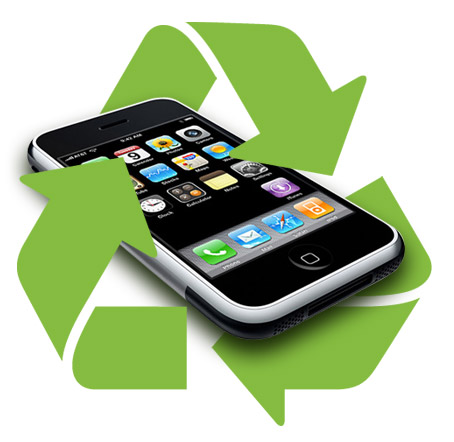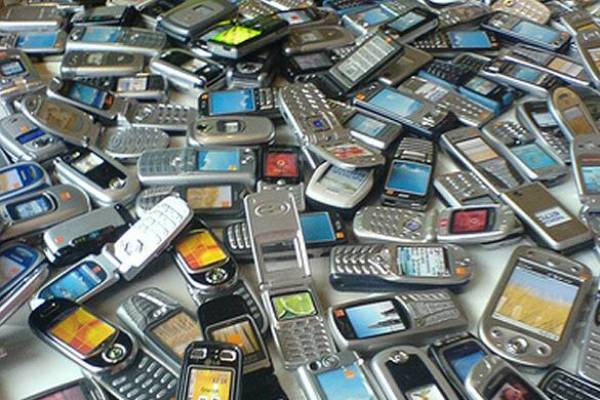Phone recycling Biography
Source(google.com.pk)
Users, on average replace mobiles every 11 months, according to Environmental Mobile Control (EMC), a leading international mobile phone recycling company owned by Redeem that focuses on B2B recycling. EMC are specialists in mobile phone recovery. They state (March 2011) it is estimated that up to 90 million mobile phones are discarded in drawers and cupboards across the UK; that's amazing. To put it in perspective, these weigh 11,250 tonnes, the equivalent to more than 30 Boeing 747s! They are a hazard if discarded but if they are recycled they can be put to very good use.
Wikipedia estimates that there were about 76 million phone users in the UK in Dec 2008 (Ref: Wikipedia, Mar 2011), with 5 billion mobile phone users world-wide in 2010 (Ref: Wikipedia, Mar 2011) and this number is steadily rising. EMC also state that a mobile phone is sold every minute in the UK. So, millions of old phones could potentially be recycled annually, although it is estimated that only a small percentage are. To comply with the WEEE directive, all companies should ensure that all mobile phones are recycled. The detailed terms are more complicated than this, however, and interested parties (producers and suppliers especially) should look to the Industry Council For Electronic Equipment Recycling web site.
A number of valuable materials are used in the construction of mobile phones, and they contain components which, if carefully removed, can be used again, for example in electronic devices.
Perhaps more importantly, some cell phones and their accessories contain substances that are amongst the 10 most dangerous known to man including Cadmium, Rhodium, Palladium, Beryllium and Lead Solder (Ref: Cellular Reclamation Ltd, Nov 2004) and most of this ends up in a land fill site or the sea. Now with so many convenient mobile phone recycling schemes around, there's no need for this - and no excuse for not recycling your old phone; many companies now offer cash for your old phone.
mobile Phone Mast, taken by Wendy near Cape Town
A Tree? No, it's a Mobile Phone Mast camouflaged as a Tree, taken by Wendy near Cape Town
Click to enlarge
The content of mobile phones varies from model to model, and as the technology advances there will be changes in the composition. Previously published data (Ref: BT Cellnet and Mobile Takeback sites, Sept 2001) state that a reasonable average (weight percent) is:
ABS-PC 29%
Ceramics 16%
Cu and compounds 15%
Silicon Plastics 10%
Epoxy 9%
Other Plastics 8%
Iron 3%
PPS 2%
Flame retardant 1%
Nickel and compounds 1%
Zinc and compounds 1%
Silver and compounds 1%
Al, Sn, Pb, Au, Pd, Mn, etc. less than 1%
Ni-Cd batteries contain Cadmium, a dangerous toxic and carcinogenic substance. Fortunately modern devices, especially small ones, have moved away from the use of Ni-Cd in favour of Lithium-Ion. Although more expensive they have important advantages such as higher power densities and much lower toxicity. However mobiles can also contain arsenic, mercury and other dangerous toxic substances. The quantity in landfill sites is significant, and considerable toxic contamination is caused by the inevitable medium and long-term effects of these substances leaking into the surrounding soil.
Many schemes recover and reuse various parts from the phones and their accessories. These can be sent for separate metals recovery (including precious and semiprecious metals); this involves grinding down the parts to isolate metals components for recycling. Useful metal content can also be extracted from phone batteries and recycled. Plastic elements of phones can be recovered through energy-from-incineration; some plastics recovered from the outer body of recycled telephones can be granulated and reformulated and can be reused in mouldings such as car wheel trims and printer cassettes. Recovery and downgrading of valuable components, such as flash memory devices can be achieved. Useful parts include aerials, battery connectors, PCBs (printed circuit boards) , connectors including gold-coated edge contacts on PCBs, ICs (integrated circuits), keyboards, LCD screens, lenses, microphones, phone housings, screws, SIM card assemblies and speakers.
Over the years, however, another end-of-life option has emerged and is gaining popularity. It has become more common for companies to refurbish old mobiles and sell or pass these on to developing countries including eastern European countries and parts of Africa.
Several schemes set up for recycling and safe disposal of mobile phones, most of which seem to be national, are listed on the envocare site (see the Mobiles and Telephones page from the navigation menu). Most are free to you, many of them help charities and some can earn you cash. The schemes typically catalogue the phones, including the IMEI identification number. SIM cards are checked and any found ‘live’ are (or should be) reported back. All the equipment should be recycled in accordance with the terms of current and draft EU legislation. You should be issued with an inventory and Duty of Care Transfer Certificate that transfers the responsibility for safe disposal to the scheme. The batteries should be processed by a specialist reprocessing plant to extract the metals.
Further information on related topics will be found in Reference pages elsewhere on this site, for example look for Waste from Electrical and Electronic Equipment WEEE, Restriction of Use of Certain Hazardous Substances RoHS, Electric Batteries and Cells Batteries, Plastics: Recycling and Marking Codes Plastics and Duty of Care.
Phone recycling Phone Wallpapers Icon Backgrounds Cases Wallpapers Hd Logo Call Numbers Booth Symbol Images Phones

Phone recycling Phone Wallpapers Icon Backgrounds Cases Wallpapers Hd Logo Call Numbers Booth Symbol Images Phones

Phone recycling Phone Wallpapers Icon Backgrounds Cases Wallpapers Hd Logo Call Numbers Booth Symbol Images Phones

Phone recycling Phone Wallpapers Icon Backgrounds Cases Wallpapers Hd Logo Call Numbers Booth Symbol Images Phones

Phone recycling Phone Wallpapers Icon Backgrounds Cases Wallpapers Hd Logo Call Numbers Booth Symbol Images Phones

Phone recycling Phone Wallpapers Icon Backgrounds Cases Wallpapers Hd Logo Call Numbers Booth Symbol Images Phones

Phone recycling Phone Wallpapers Icon Backgrounds Cases Wallpapers Hd Logo Call Numbers Booth Symbol Images Phones

Phone recycling Phone Wallpapers Icon Backgrounds Cases Wallpapers Hd Logo Call Numbers Booth Symbol Images Phones

Phone recycling Phone Wallpapers Icon Backgrounds Cases Wallpapers Hd Logo Call Numbers Booth Symbol Images Phones

Phone recycling Phone Wallpapers Icon Backgrounds Cases Wallpapers Hd Logo Call Numbers Booth Symbol Images Phones

No comments:
Post a Comment